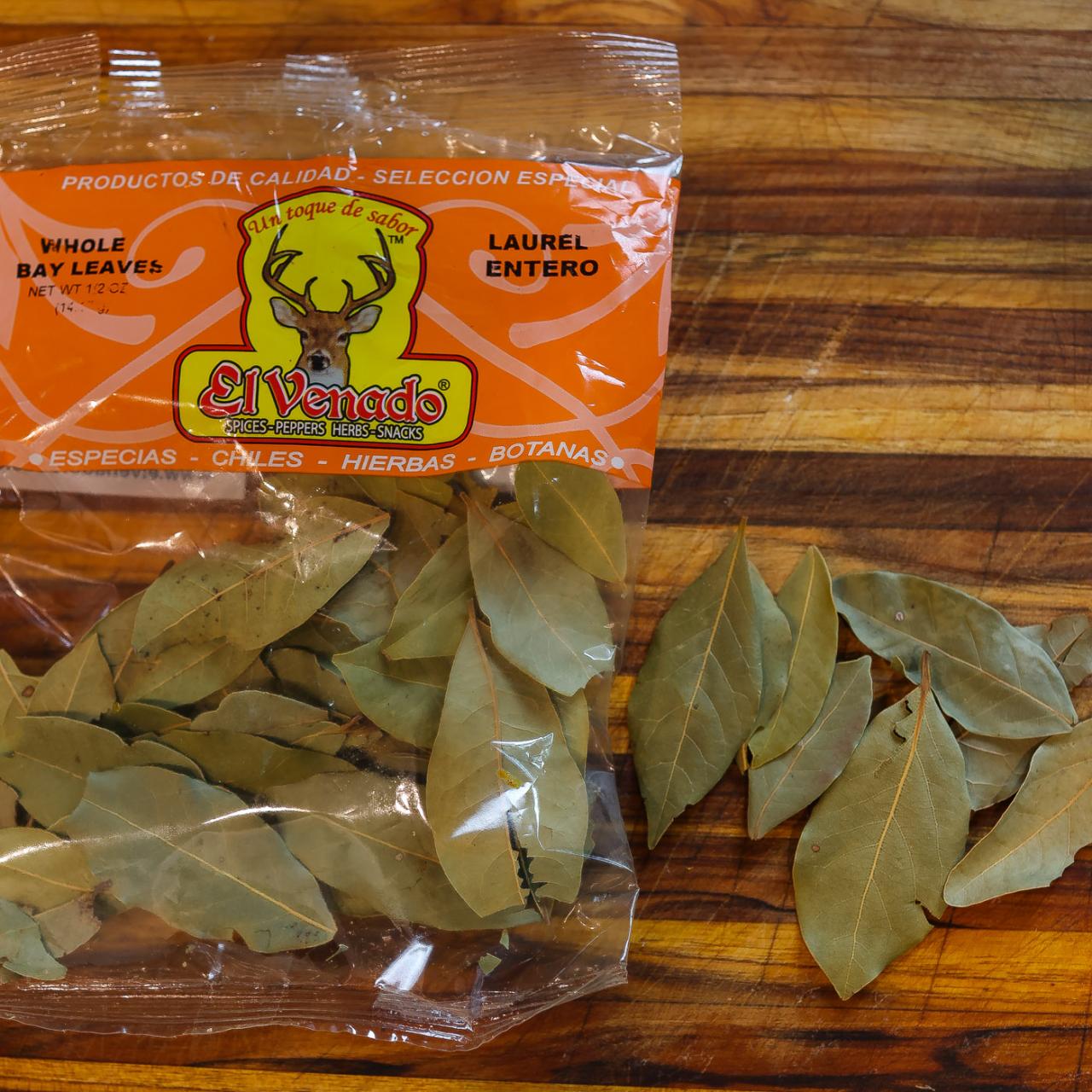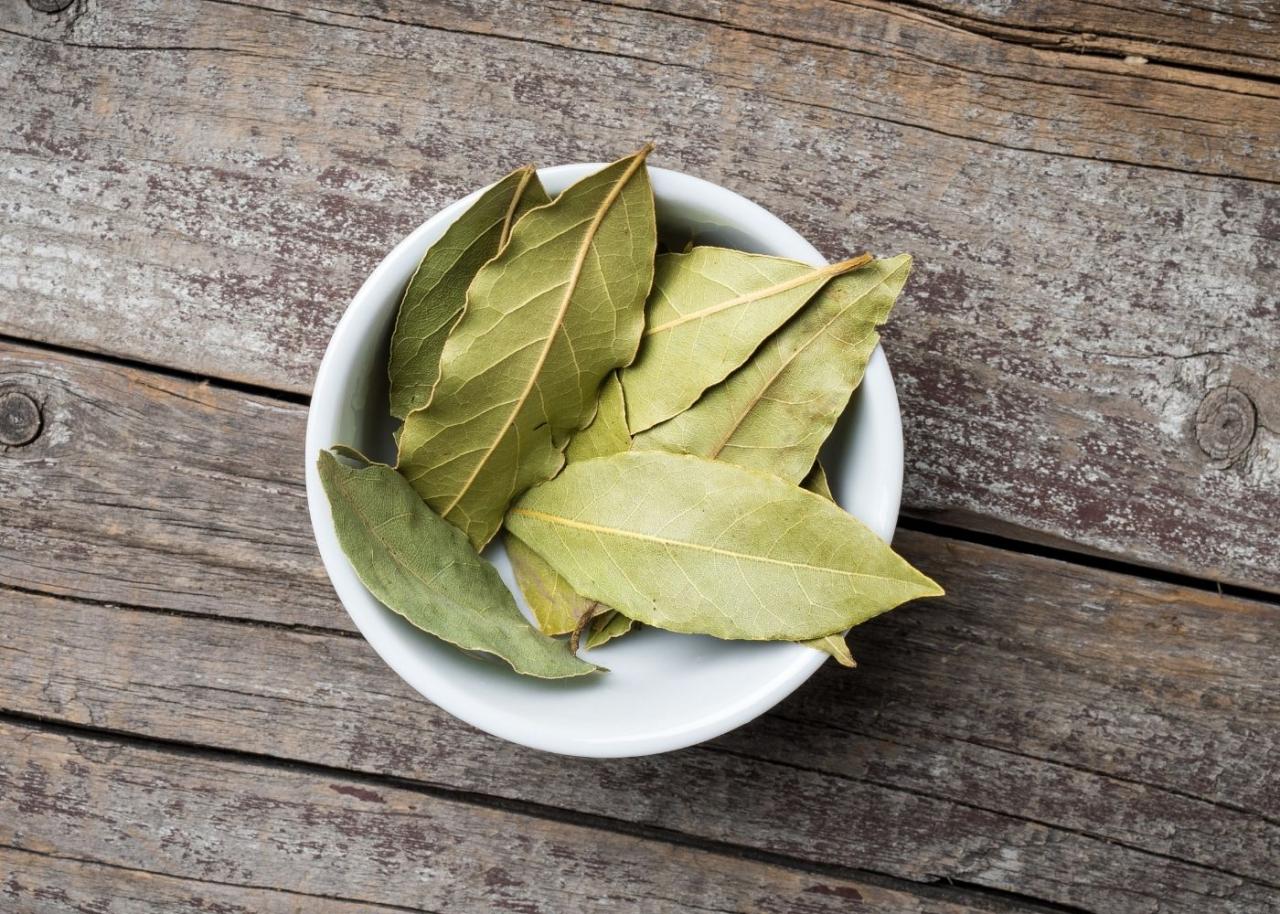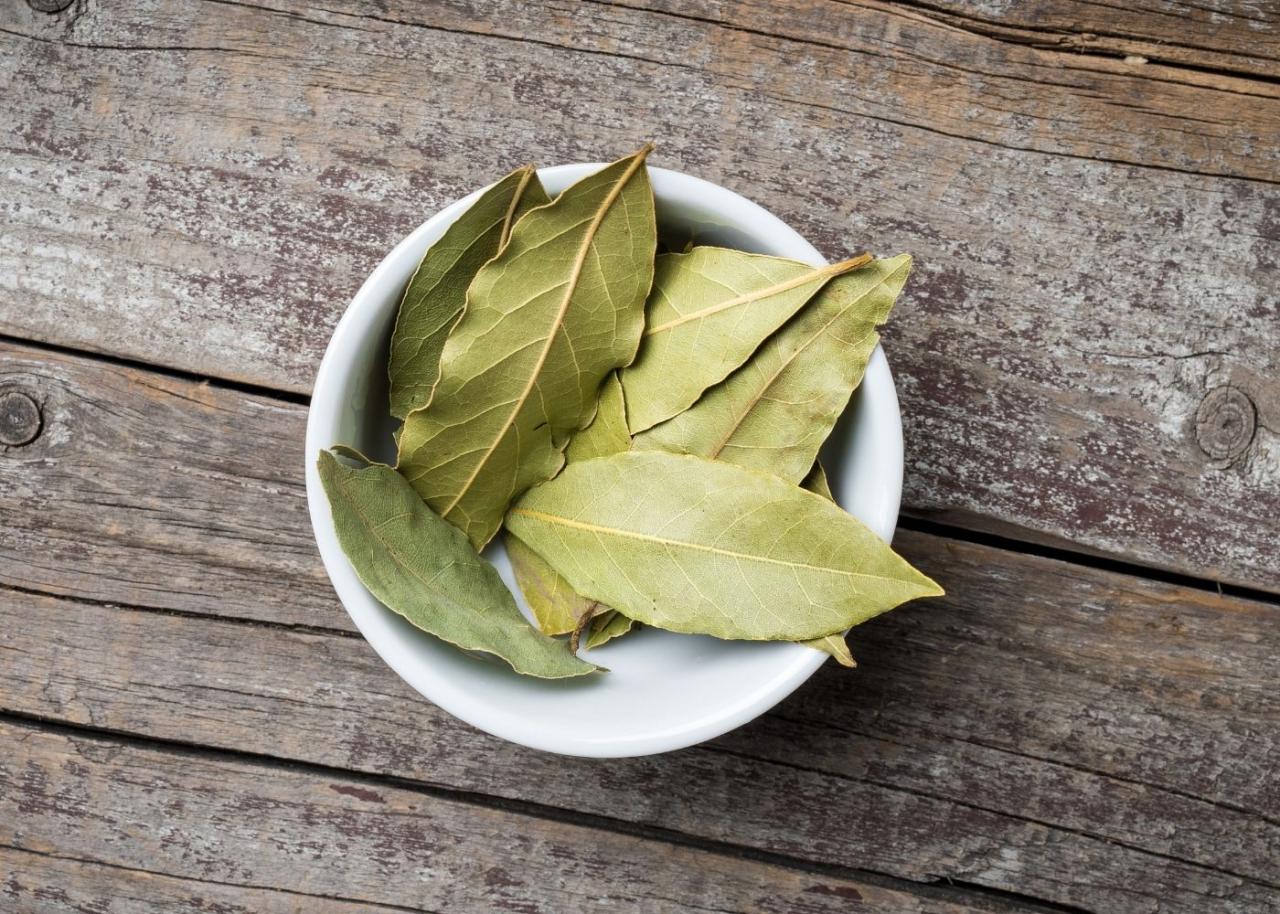The Best Practices for Using Bay Leaf Alternatives in Your Cooking is a guide for home cooks and chefs alike, offering a practical and flavorful approach to substituting bay leaves in your culinary creations. While bay leaves are a staple in many kitchens, there are times when finding alternatives is essential, whether it’s due to dietary restrictions, ingredient availability, or simply a desire to explore new flavor profiles.
This article delves into the world of bay leaf alternatives, exploring their unique characteristics and how to best incorporate them into your recipes. From popular options like thyme and rosemary to less common alternatives, we’ll cover everything you need to know to elevate your dishes with a touch of culinary ingenuity.
Introduction to Bay Leaf Alternatives

Bay leaves are a staple ingredient in many cuisines worldwide, adding a unique and complex flavor to dishes. They possess a distinctive aroma that is both earthy and slightly bitter, with hints of camphor and eucalyptus. This aromatic herb is commonly used in stews, soups, sauces, and marinades, enhancing the overall flavor profile of the dish.While bay leaves are a beloved ingredient, there are instances where individuals might seek alternatives.
Some people might have allergies or sensitivities to bay leaves, while others might simply be looking for a different flavor profile. Additionally, availability can be a factor, as fresh bay leaves might not always be readily accessible.
Reasons for Seeking Bay Leaf Alternatives
There are several reasons why individuals might choose to use bay leaf alternatives in their cooking:
- Allergies or Sensitivities:Some individuals may experience allergic reactions or sensitivities to bay leaves, leading them to seek alternative ingredients.
- Flavor Preferences:Different cuisines and cooking styles might favor different flavor profiles. Some individuals may prefer a milder or more subtle flavor compared to the distinct taste of bay leaves.
- Availability:Fresh bay leaves might not always be readily available, particularly in certain regions or seasons. Alternatives provide a convenient solution for those who do not have access to fresh bay leaves.
- Cost:Bay leaves can be relatively expensive, especially if purchasing high-quality, organic leaves. Using alternative ingredients can be a more budget-friendly option.
Popular Bay Leaf Alternatives
Bay leaves, with their distinctive aroma and flavor, are a staple in many cuisines worldwide. However, situations may arise where you might need to substitute bay leaves, whether due to unavailability or personal preference. Fortunately, a range of herbs and spices offer similar flavor profiles and can effectively replace bay leaves in your culinary creations.
Bay Leaf Alternatives: A Comparative Table, The Best Practices for Using Bay Leaf Alternatives in Your Cooking
This table provides a comprehensive overview of popular bay leaf alternatives, highlighting their flavor profiles, culinary uses, and availability:| Alternative | Flavor Profile | Culinary Uses | Availability ||—|—|—|—|| Thyme | Earthy, slightly minty, with hints of lemon | Soups, stews, roasted vegetables, poultry, fish | Fresh, dried || Rosemary | Woody, piney, slightly camphoraceous | Roasted meats, lamb, poultry, stews, marinades | Fresh, dried || Laurel Leaves | Similar to bay leaves, but milder and sweeter | Soups, stews, sauces, marinades | Dried || Sage | Earthy, slightly peppery, with a hint of bitterness | Stuffing, poultry, pasta sauces, butter sauces | Fresh, dried, ground || Marjoram | Sweet, slightly peppery, with a hint of oregano | Soups, stews, tomato sauces, roasted vegetables | Fresh, dried || Oregano | Earthy, slightly bitter, with a hint of citrus | Pizza, pasta sauces, tomato sauces, roasted vegetables | Fresh, dried, ground || | | | |
Tips for Using Bay Leaf Alternatives
While bay leaves are a staple in many cuisines, their distinct flavor and aroma can be replicated using various alternatives. Understanding how to use these substitutes effectively is crucial for achieving the desired taste and texture in your dishes. This section will guide you through tips for using bay leaf alternatives, focusing on specific substitutions, adjusting cooking times, and considering the desired flavor profile.
Adjusting Cooking Times and Methods
The cooking time and methods for using bay leaf alternatives might differ from those used for bay leaves. It’s important to adjust these aspects to ensure optimal flavor extraction and avoid any unwanted bitterness or harshness.
- Dried Herbs:When using dried herbs like thyme, rosemary, or oregano, consider reducing the cooking time by about half compared to using bay leaves. Dried herbs release their flavors quickly, so prolonged cooking can lead to a bitter taste.
- Fresh Herbs:Fresh herbs, like parsley, sage, or basil, require even shorter cooking times. Adding them towards the end of cooking helps preserve their delicate flavors and aromas.
- Spices:Spices like black peppercorns, cloves, or allspice, can be used for a longer duration than dried herbs. They typically require about the same cooking time as bay leaves.
Flavor Profile and Intensity
The intensity of the flavor and aroma of bay leaf alternatives can vary significantly. It’s essential to consider the desired flavor profile and adjust the amount of the alternative accordingly.
- Subtle Flavors:For a subtle flavor, start with a smaller amount of the alternative and gradually increase it based on your preference.
- Strong Flavors:If you prefer a bolder flavor, you can use a slightly larger amount of the alternative, but be cautious not to overpower the dish.
- Blending Alternatives:Experiment with combining different alternatives to create a unique and complex flavor profile. For instance, you can use a combination of thyme, rosemary, and black peppercorns to mimic the earthy and slightly bitter notes of bay leaves.
Recipe Examples with Bay Leaf Alternatives: The Best Practices For Using Bay Leaf Alternatives In Your Cooking
Bay leaf alternatives offer a unique opportunity to explore diverse flavors and aromas in your cooking. They can be used in various dishes, from hearty stews to aromatic sauces, adding depth and complexity to your culinary creations.
Using Lemon Verbena in a Mediterranean Chicken Stew
Lemon verbena, with its citrusy and slightly minty notes, is an excellent substitute for bay leaves in Mediterranean dishes. Its refreshing aroma complements the flavors of tomatoes, garlic, and herbs commonly used in these cuisines.
Ingredients:
- 1 tablespoon olive oil
- 1 onion, chopped
- 2 cloves garlic, minced
- 1 pound boneless, skinless chicken thighs, cut into bite-sized pieces
- 1 (28-ounce) can diced tomatoes, undrained
- 1 cup chicken broth
- 1/2 cup chopped fresh parsley
- 1/4 cup chopped fresh lemon verbena
- Salt and pepper to taste
Instructions:
- Heat olive oil in a large pot over medium heat. Add onion and cook until softened, about 5 minutes.
- Add garlic and chicken and cook until chicken is browned on all sides, about 5 minutes.
- Stir in diced tomatoes, chicken broth, parsley, and lemon verbena. Bring to a boil, then reduce heat and simmer for 30 minutes, or until chicken is cooked through and the sauce has thickened.
- Season with salt and pepper to taste.
- Serve hot over rice or crusty bread.
This hearty stew is a flavorful and aromatic dish, with the lemon verbena adding a bright and refreshing twist. The chicken is tender and juicy, while the sauce is rich and flavorful. The combination of lemon verbena and other herbs creates a complex and balanced flavor profile.
When substituting bay leaves, remember that their flavor is subtle and takes time to infuse. It’s crucial to use the right amount of alternative and to adjust cooking times accordingly. For a comprehensive guide on finding the perfect substitutes for bay leaves, check out How to Cook Deliciously Without Bay Leaves Using These Alternatives.
This will help you achieve the same depth of flavor without the hassle of finding fresh bay leaves.
Image Description:A steaming bowl of Mediterranean chicken stew with tender chicken pieces, diced tomatoes, and a vibrant green garnish of fresh parsley and lemon verbena. The stew is served over a bed of fluffy white rice. The image evokes a sense of warmth, comfort, and culinary delight.
Exploring Less Common Alternatives
While the alternatives discussed previously are popular and readily available, there are a plethora of less common bay leaf substitutes that can add unique flavor dimensions to your dishes. These alternatives often possess subtle nuances that can elevate your culinary creations.
While bay leaves are a staple in many kitchens, their distinct flavor can be overpowering for some dishes. If you’re looking for a more subtle touch, consider experimenting with alternative herbs like rosemary, thyme, or even sage. For a touch of good luck in the garden, try growing your own four-leaf clovers, following the expert advice found in How to Grow and Care for Four Leaf Clovers for Maximum Luck.
These alternative herbs can bring a unique dimension to your culinary creations, just like a touch of luck can bring joy to your day.
Flavor Profiles and Culinary Applications of Less Common Bay Leaf Alternatives
The following table Artikels less common bay leaf alternatives, categorized by their flavor profiles and potential culinary applications. This categorization allows you to select the best alternative based on the desired flavor profile and the specific dish you are preparing.
Alternative |
Flavor Profile |
Culinary Applications |
|---|---|---|
Lemon Verbena |
Citrusy, lemony, slightly floral |
Seafood dishes, chicken, sauces, desserts, herbal teas |
Thyme |
Earthy, slightly peppery, herbaceous |
Soups, stews, braised meats, roasted vegetables, sauces |
Rosemary |
Piney, slightly bitter, camphoraceous |
Roasted meats, poultry, vegetables, breads, marinades |
Sage |
Earthy, slightly peppery, savory |
Stuffings, poultry, pasta dishes, sauces, butter |
Marjoram |
Sweet, slightly peppery, herbaceous |
Chicken, lamb, vegetables, salads, sauces |
Oregano |
Earthy, slightly bitter, pungent |
Italian dishes, tomato sauces, pizzas, meat dishes |
Basil |
Sweet, slightly spicy, herbaceous |
Italian dishes, tomato sauces, pesto, salads |
Tarragon |
Anise-like, slightly licorice, herbaceous |
Chicken, fish, eggs, sauces, vinegars |
Lovage |
Celery-like, slightly peppery, herbaceous |
Soups, stews, salads, sauces, vegetables |
Chervil |
Anise-like, slightly sweet, delicate |
Salads, soups, sauces, eggs, fish |
Parsley |
Slightly peppery, herbaceous |
Salads, soups, sauces, meat dishes, garnishes |
Resources for Further Research
For deeper exploration of these less common bay leaf alternatives, consider consulting the following resources:
- Culinary websites and blogs: Numerous websites and blogs offer detailed information on various herbs and spices, including their flavor profiles, culinary applications, and potential health benefits.
- Cookbooks: Cookbooks dedicated to herbs and spices, or those featuring specific cuisines, often provide insights into the use of less common bay leaf alternatives.
- Herb societies and organizations: Herb societies and organizations often host events, workshops, and online resources that delve into the world of herbs and spices.
Considerations for Using Alternatives
While bay leaf alternatives offer a way to replicate the characteristic aroma and flavor profile of traditional bay leaves, it’s essential to consider their potential impact on the overall taste of your dishes. The intensity and nuances of each alternative can vary, requiring adjustments to your recipe’s seasoning and ingredient combinations.
Flavor Balance and Adjustments
The flavor profiles of bay leaf alternatives can differ significantly from traditional bay leaves. Some alternatives might be more potent, while others may have a milder or more subtle flavor. To ensure a harmonious flavor balance in your dish, you might need to adjust the amount of other seasonings and ingredients.
For instance, if you’re using a stronger alternative like rosemary, you might need to reduce the amount of salt or pepper used in the recipe. Conversely, if you’re using a milder alternative like thyme, you might need to increase the amount of other spices to compensate for the reduced bay leaf flavor.
Avoiding Overpowering Flavors
While bay leaf alternatives can enhance the taste of your dishes, it’s crucial to avoid overpowering the other flavors. Start by using a small amount of the chosen alternative and gradually increase it as needed. Remember that flavors develop and intensify during cooking, so it’s better to err on the side of caution.
Here are some additional tips for avoiding overpowering flavors:
- Use a combination of alternatives instead of relying solely on one. This can create a more complex and balanced flavor profile.
- Add alternatives towards the end of cooking, especially if they are strong in flavor. This allows the flavors to meld without dominating the dish.
- Experiment with different alternatives and ratios to find the perfect combination for your taste preferences.
Final Conclusion

By understanding the nuances of different bay leaf alternatives and their flavor profiles, you can confidently experiment with new ingredients and elevate your cooking to new heights. Whether you’re seeking a subtle herbal note, a pungent piney aroma, or a touch of citrusy zest, there’s a bay leaf alternative waiting to be discovered.
So, embrace the world of culinary exploration and unlock a whole new dimension of flavor in your dishes.
FAQ Corner
Are bay leaf alternatives always a direct substitute?
While some alternatives can be used directly, others require adjustments in quantity or cooking time to achieve the desired flavor intensity. Always consider the specific alternative and the recipe’s requirements.
Can I use bay leaf alternatives in all recipes?
Not all recipes are suitable for substituting bay leaves. Some dishes rely heavily on the unique flavor profile of bay leaves, and using an alternative might alter the intended taste.
What are the best bay leaf alternatives for specific dishes?
The best alternative depends on the desired flavor profile and the specific dish. For example, thyme works well in soups and stews, while rosemary adds a distinct piney aroma to meat dishes.
